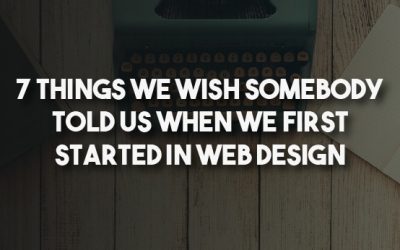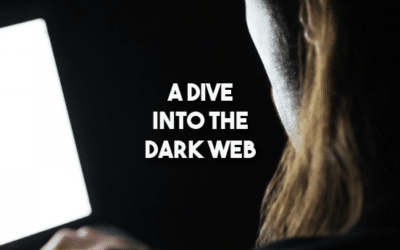Inclusive web design is not only just ensuring a website is accessible. That’s a part of inclusive design, but not the whole idea. If you’d like to build inclusive websites, this means the goal is to create a beautiful website that appeals to a broader base of site users.
Inclusive design means creating websites and web pages that are welcoming and comfortable for everyone, no matter their sexual orientation, gender, race, age, impairment, and more. This is what inclusive design is all about.
If you’re set on building an inclusive website, have you noticed the images on stock photo sites? If not, then take a look at some of the most popular stock photo sites. While you may find some images that are somewhat inclusive, there aren’t that many.
Is diversity in website images an essential issue?
Table of Contents
Yes, Diversity in Website Images is Essential
In order to create a website that users find credible and trustworthy, it’s essential that all content on the site be inclusive. When a website uses inclusive design and images, site visitors will find themselves on a site that feels welcoming and comfortable. This helps them to feel that business is credible and to be trusted.
Diversity in images means not just taking care of a person’s race, religion, sexual orientation, and more. It’s about having images that a broader range of people can identify with. What do we mean?
Well, first, take a look at where you’re working. If you’re working remotely, the location may be your home, a café, coffee house, restaurant, and more. Now, take a look at the stock image sites you normally use. What do you see? Where are people working? Most of the time, they’re in a skyscraper on the 50th floor in a major city. Does this image in any way resemble where you’re currently working? Maybe, but not for everyone.
While the major stock image sites are doing a better job of trying to be more inclusive, they still have a ways to go. So, we’ve done some research to help you find other stock image sites that offer a more diverse range of images for your website designs.
Stock Image Sites with Greater Inclusivity
You can find a wider range of inclusive images on the following sites:
CreateHer Stock: the site’s tagline reads, “Your destination for authentic stock images featuring melanated women.” These images can be used for a wide range of sites and show “melanated” women in authentic business, lifestyle, and everyday situations. This site offers a subscription for their image services.
Getty Images #ShowUs Project: this is a site that has created a library of over 14,000 images geared to showing the beauty of those who identify as female, non-binary individuals. The images have been created by a global community of 200 photographers from 41 different countries.
Nappy: here’s an image collection that’s dedicated to creating inclusive, realistic images that show a diverse community of people at work and more. You’ll find images that include “beautiful photos of Black and Brown people, for free.”
TONL: provides diverse stock photos that show the real world and real people. These images are inclusive and contain a diverse mix of people. You can choose from various categories of images, including:
- Taste
- Today
- Tone
- Tradition
- Travel
- And more
Another Option: Try User Generated Content (UGC)
There are times when it may be difficult to find images that fit a specific business or website. Diverse, inclusive images are not always easy to find, especially for a business that’s relatively new. For these projects, why not consider UGC?
To find UGC images, consider using social media, such as Instagram or Pinterest. Both of these platforms are geared toward images rather than text. It may be possible to find some high-resolution images for the site here. However, remember to always ask permission before utilising the images. What’s more, if the company has a fan base, what better place to find user-generated content?
Another way to use social media content is to search for photos used by the competition. See what tags they’ve sued and what their customer base is. Look for images that reflect the true environments and people in the customer base. Use these images for inspiration when you can’t find stock photos. You can have a photographer create photos based on images used by the competition. Of course, the photos should not be exact copies; however, they can definitely be used as a guide to creating beautiful images that are new and unique.
Use Diverse Colours in Illustrations
Another issue is the lack of variation in colours used in illustrations. You may see a hand used in an illustration, for instance. The hand may be white, which is not very inclusive. Instead, why not use a brown hand? This is an example of using diverse colours to create a more inclusive website.
What’s more, product mockups can also be made to be more inclusive. Use mockups that incorporate more than one skin tone, gender, or age, for instance.
Improved Icons
Another way to create more inclusive websites is to use better icons. While icons are small and don’t seem very important, they do carry symbols that some people may not be able to relate to.
For example, do a Google search for profile icons. The results may surprise you. They’re predominantly male. So, why not consider being a little different and inclusive? You might want to consider using a real photo of a user rather than just an icon. You might also choose abstract images rather than traditional profile icons, and so on.
Summing It Up
When you’re creating websites, the goal is to use inclusive design. Inclusive design applies to all design elements, including photos, icons, illustrations, and more.
You can start being more inclusive by choosing alternative stock photography sites that offer more inclusive images. In addition, you can use UGC and social media to come up with ideas for images that are more inclusive.
The ultimate goal with inclusive design is to make everyone feel welcome as much as possible.

Liam is a website designer and digital marketer based in Leeds, West Yorkshire. He spent a decade working within the charity sector before moving into the marketing space a number of years ago. Liam always strives to do something slightly different with every project and always designs to deliver results, not just pretty websites.











0 Comments